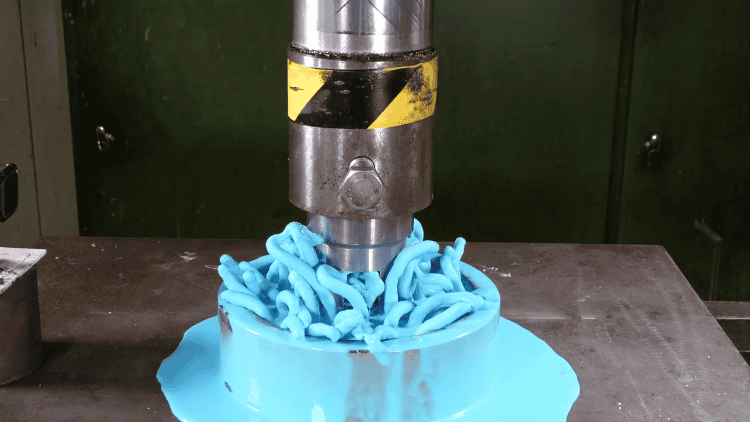Fluids whose viscosity varies based on the pressure applied on it are called the non-newtonian fluids. The most common example of a non-Newtonian fluid is the cornstarch mixed with water. When it is stirred slowly, it behaves like a thin liquid, but when a force is applied to it, it can solidify easily. The team at the YouTube channel Hydraulic Press Channel was curious to know what happens if a slow but steady pressure of 150 bars is applied to the liquid, so they decided to check it themselves. The team mixed a batch of cornstarch and water, added some blue dye for effect and sent a pressure plate drilled with small holes down on the fluid.
First, the water was extracted in a single blue wave, and then the remaining blue cornstarch mix is pushed through the drill plate in the form of thin worms. The team then used another kind of non-newtonian fluid which can change colour when it experiences a significant temperature change. A high amount of energy is needed to improve form, so the team expected it to change colour when pressure is applied. However, the liquid stayed orange, and the liquid behaved in a different way which turned into chaos. Watch the video below to see what happened to the fluid and the hydraulic press in the end.

